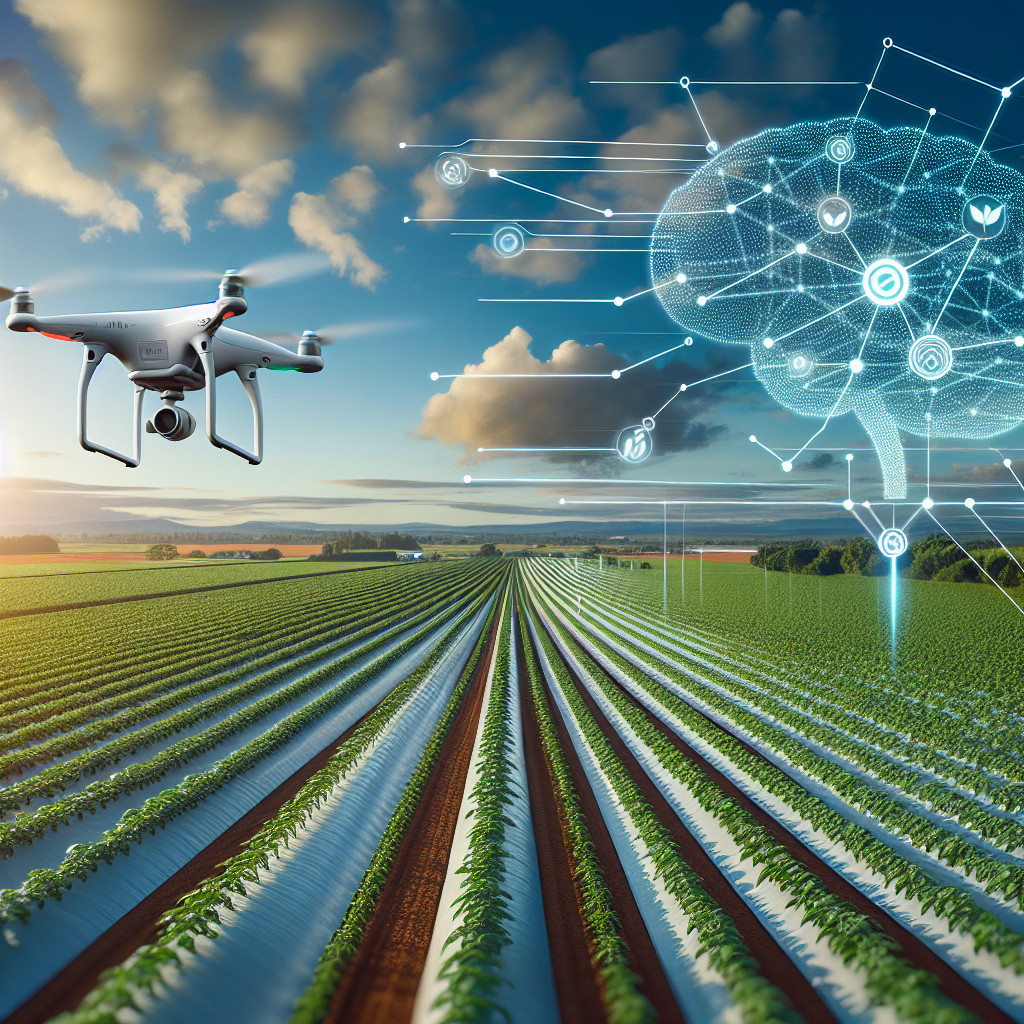AI-Powered Solutions for Weed Control in Agriculture
Weeds are a major problem for farmers, competing with crops for nutrients, water, and sunlight. Traditional methods of weed control, such as manual labor and chemical herbicides, are expensive and can have negative environmental impacts. However, with advances in artificial intelligence (AI) technology, new solutions for weed control in agriculture are emerging.
AI-powered solutions for weed control in agriculture use computer vision and machine learning algorithms to identify and target weeds, allowing for more precise and efficient weed management. These technologies have the potential to revolutionize the way farmers control weeds, reducing costs, increasing yields, and minimizing the use of harmful chemicals.
One of the key advantages of AI-powered weed control solutions is their ability to distinguish between crops and weeds with a high level of accuracy. By using cameras mounted on drones or tractors, AI algorithms can analyze images of fields in real-time, identifying and mapping out the locations of weeds. This information can then be used to selectively apply herbicides only to the areas where weeds are present, minimizing the impact on crops and reducing the overall amount of chemicals used.
Another benefit of AI-powered weed control solutions is their ability to adapt to changing conditions in the field. By continuously analyzing data from sensors and cameras, AI algorithms can adjust their weed control strategies in real-time based on factors such as weed density, crop growth stage, and weather conditions. This dynamic approach allows for more effective weed management and can help farmers respond quickly to emerging weed threats.
In addition to improving weed control efficiency, AI-powered solutions can also help farmers reduce their environmental footprint. By using targeted herbicide applications and minimizing the use of chemicals, these technologies can help protect soil health, water quality, and biodiversity. Furthermore, by reducing the need for manual labor and chemical inputs, AI-powered weed control solutions can lower production costs and increase profitability for farmers.
One example of an AI-powered weed control solution is Blue River Technology’s See & Spray system. This technology uses computer vision and machine learning algorithms to identify and target individual weeds in a field, allowing for precise herbicide applications. By spraying only the weeds and not the surrounding crops, the See & Spray system can reduce herbicide use by up to 90% compared to traditional broadcast spraying methods. This not only saves money for farmers but also reduces the environmental impact of weed control operations.
Another example of AI-powered weed control technology is the WeedSeeker system developed by Trimble. This system uses sensors to detect the presence of weeds in a field and automatically activates sprayers to apply herbicides only to the weed-infested areas. By targeting weeds with precision, the WeedSeeker system can reduce herbicide use by up to 75% while maintaining high levels of weed control efficacy. This technology is particularly useful for controlling herbicide-resistant weeds, which are becoming an increasing problem for farmers around the world.
Overall, AI-powered solutions for weed control in agriculture have the potential to revolutionize the way farmers manage weeds, offering greater precision, efficiency, and sustainability compared to traditional methods. By harnessing the power of artificial intelligence, farmers can reduce costs, increase yields, and protect the environment while effectively controlling weeds in their fields.
FAQs
Q: Are AI-powered weed control solutions cost-effective for farmers?
A: Yes, AI-powered weed control solutions can be cost-effective for farmers in the long run. While the initial investment in technology may be high, the savings from reduced herbicide use, labor costs, and increased yields can outweigh the upfront costs over time.
Q: Do AI-powered weed control solutions pose any risks to human health or the environment?
A: AI-powered weed control solutions are designed to minimize the use of chemicals and reduce the environmental impact of weed control operations. By targeting weeds with precision and minimizing herbicide applications, these technologies can help protect human health and the environment.
Q: Can AI-powered weed control solutions be used in organic farming?
A: Yes, AI-powered weed control solutions can be used in organic farming, as they can help reduce the need for chemical herbicides and minimize the impact on soil health and biodiversity. These technologies can be a valuable tool for organic farmers looking to manage weeds more effectively and sustainably.
Q: How accurate are AI-powered weed control solutions in identifying and targeting weeds?
A: AI-powered weed control solutions can achieve high levels of accuracy in identifying and targeting weeds, thanks to advances in computer vision and machine learning algorithms. By analyzing images of fields in real-time, these technologies can distinguish between crops and weeds with a high level of precision, allowing for targeted herbicide applications.
Q: What are the limitations of AI-powered weed control solutions?
A: While AI-powered weed control solutions offer many benefits, they also have some limitations. For example, these technologies may require a reliable internet connection and access to data for optimal performance. Additionally, AI algorithms may need to be trained on a specific crop-weed system to achieve the desired level of accuracy. Despite these limitations, AI-powered weed control solutions hold great potential for revolutionizing weed management in agriculture.

